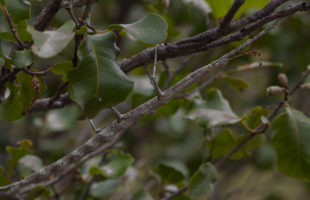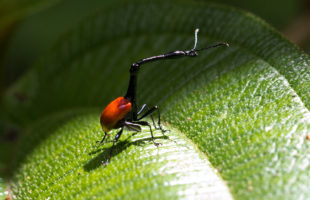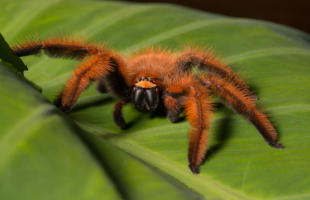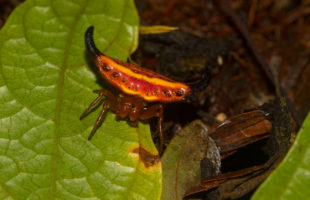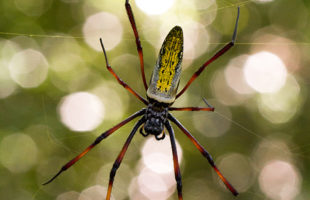The giraffe-necked weevil is one of the most famous insects in Madagascar. Named after its long neck, it is regarded as absolutely unique on the red island. However, there is another, the smaller brother of the giraffe-necked weevil on Madagascar. The species Trachelophorus madegassus occurs in the rain forest of Ranomafana and some other areas of the Madagascan highlands. The …
LesenThe Walking Stick, Achrioptera impennis
You have to look very closely to discover this Malagasy camouflage artist. Achrioptera impennis, that’s the scientific name, looks like a dry branch. But in fact, it is a living animal. Achrioptera impennis belongs to the stick insects (Phasmatodea). These are herbivorous, harmless insects that camouflage themselves perfectly in the middle of their own food by their extremely deceptive appearance. …
LesenThe Madagascar Diadem
Madagascar is a paradise for butterflies. The island is home to over 3000 species, from the tiny moth to the Rainbow Butterfly (Chrysiridia rhipheus), which shimmers in all the colors mentioned in its name. One of these Malagasy butterflies is the Gladiator Butterfly or Madagascar Diadem (Hypolimnas dexithea). It is especially popular among collectors, as it is particularly large with …
LesenThe giraffe necked weevil
One of the most famous, but also most bizarre bugs of Madagascar can be found in the eastern rainforests of the islands: Due to its longs neck, it is called giraffe necked weevil (Trachelophorus giraffa). The best time and places to find it are the national parks of Andasibe-Mantadia, Marojejy and Ranomafana in spring. In 1860, the French entomologist Henri …
LesenA short, but colorful life – The Madagascan moon moth
One of the most beautiful lepidopterans of the Earth, but first of all one of the largest, lives in Madagascar’s rainforests: The Madagascan moon moth or comet moth (Argema mittrei). With a wingspan up to 20 cm, it exceeds nearly all lepidopterans worldwide, only the Atlas moth (Attacus atlas) from Asia, belonging to the same family of emperor moths (Saturniidae), …
LesenSpider with lasso: Deinopis madagascariensis
Madagascar is home to many strange creatures. A particularly obscure one is the Malagasy Net-casting Spider (Deinopis madagascariensis). As the name suggests, one characteristic of this spider is special: the way it catches its food. The Net-Casting Spider lets itself be suspended from a leaf or branch by a thread. Then it stretches a kind of lasso made of spinning …
LesenHorror in the jungle: Megaloremmius leo
It will surely frighten you when you discover it for the first time: Megaloremmius leo, one of the few large spiders in Madagascar. Eight long legs, a thick, clumsy body, bright red hair on a black ground. Although it looks like a tarantula, it is not even related to them. Megaloremmius leo belongs to a family of spiders that are …
LesenFascinating predators: Idolomorpha madagascariensis
Praying mantises are ill-reputed as man eating and murderous within the animal kingdom. And the triangular-shaped head lets them look like real aliens. But there is more to it than that! They are fascinating insects, and an especially impressing species among them is Idolomorpha madagascariens from Madagascar. It exceeds most Malagasy praying mantis with a body length of filigree seven …
LesenNo fear of tiny spines
Rainforests are their home: Tiny, colorful, spiny creatures in spider webs. These are spiny orb weavers, and they do not really fit into the concept of a scary, quickly moving eightlegged spider. Their unusually shaped belly part does not look scary at all. In contrast to normal spiders, they even move rather slowly and ponderously, you might almost find them …
LesenThe Red-legged Golden Orb-web Spider
Most travelers are more frightened by the sight of a spider, but the Red-Legged Golden Orb-Web Spider (Trichonephila inaurata madagascariensis) can teach some people otherwise. The female, including her legs, is as big as a human hand, the body is black with a golden-yellow, white-grey lined stripe on the back, the legs are broadly striped in black and red. The …
Lesen MADAMAGAZINE Your Magazine about Madagascar
MADAMAGAZINE Your Magazine about Madagascar


